3.11 Kleidungsfarben

Hallo alle zusammen!
Zum Aufwärmen machen wir unseren Tagesminiplausch und eine Wiederholung.
Wiederholung
In the previous lesson you learned how to express what you wear for certain occasions. Let’s review.
Jetzt bist du dran!
Are you going to work today? To the university? Staying at home? Write a sentence that says what you are wearing for the occasion you find yourself in today.
Lektionsüberblick
In this lesson, we will expand our conversation about clothing to talk about how frequently you wear which colors. In the end, you will be able to 1) talk about colored and patterned clothing, 2) talk about other clothing descriptors 3) say how often you and your family members wear them.
Was weißt du schon?
Assess your current skill level with the following activity.
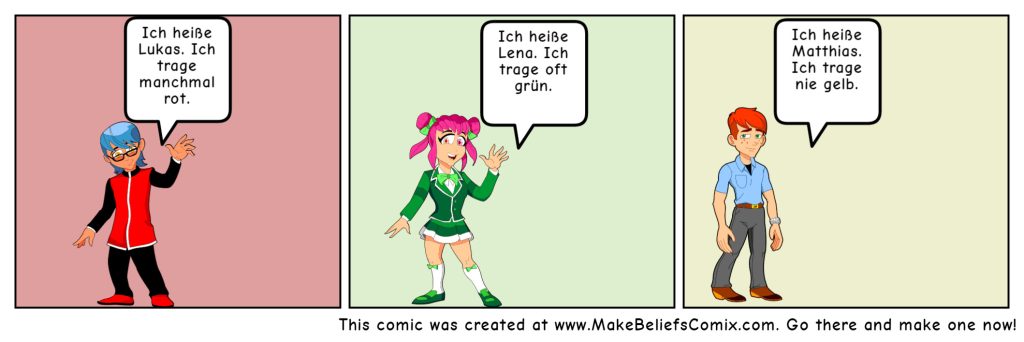
| Noch nicht start klar?
Du kannst immer auf die gleiche 1010-Lektion zurückgreifen! |
Not confident about starting this lesson?
You can always review the same Lektion from 1010. |
1) What colors and patterns do you wear?
Look at the example sentences below. On a general level, what do you notice about how the sentences are grouped together (hint: look at the endings on the descriptors before the item of clothing)? More specifically, can you determine the item of clothing, any colors involved, or any other words that might indicate how the clothing looks? Always focus on what you do know and understand.
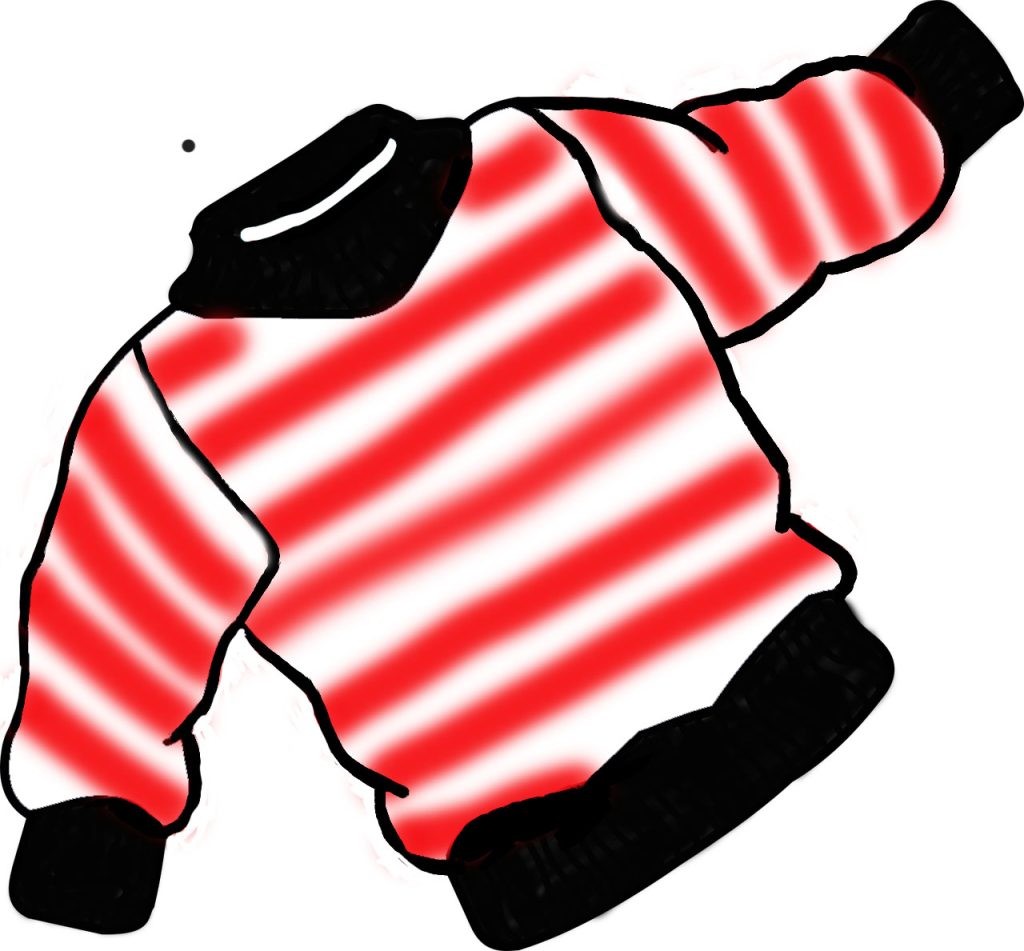 Ich trage einen rot-weiß gestreiften Pullover. |
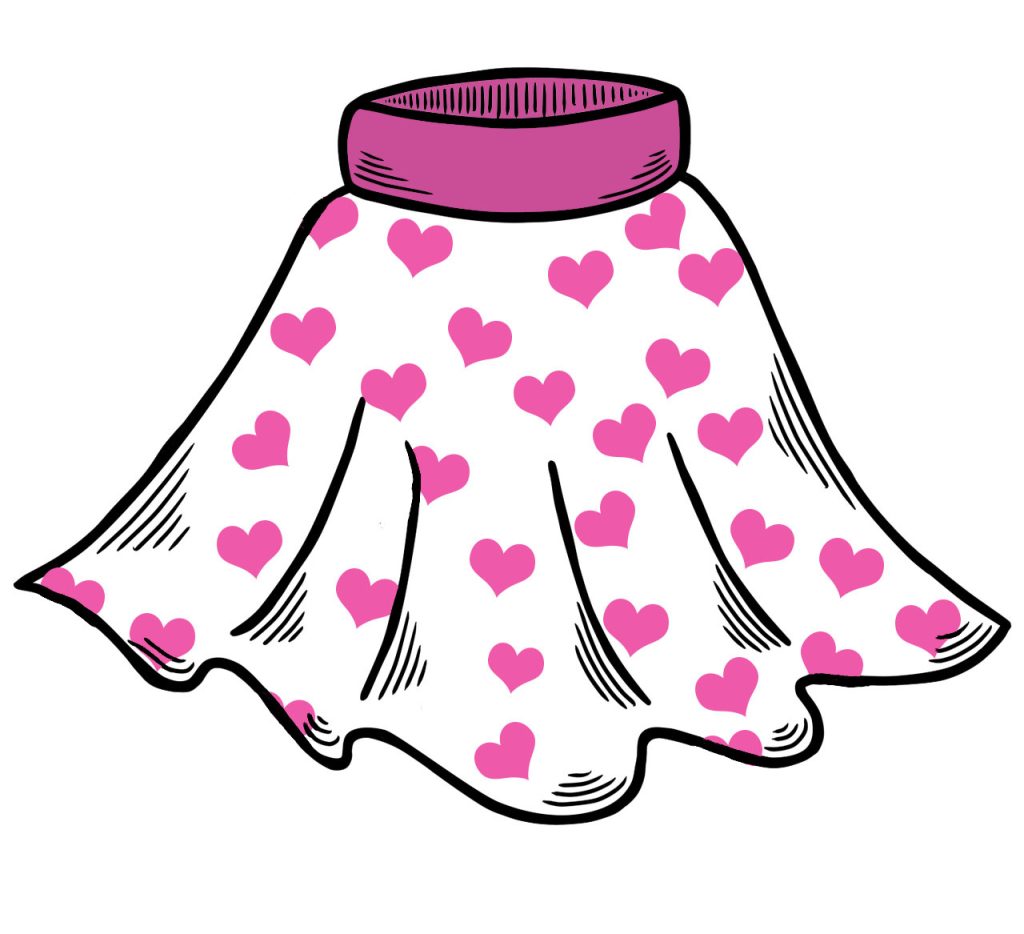 Ich trage einen mit Herzen gemusterten Rock. Ich trage einen mit Herzen gemusterten Rock. |
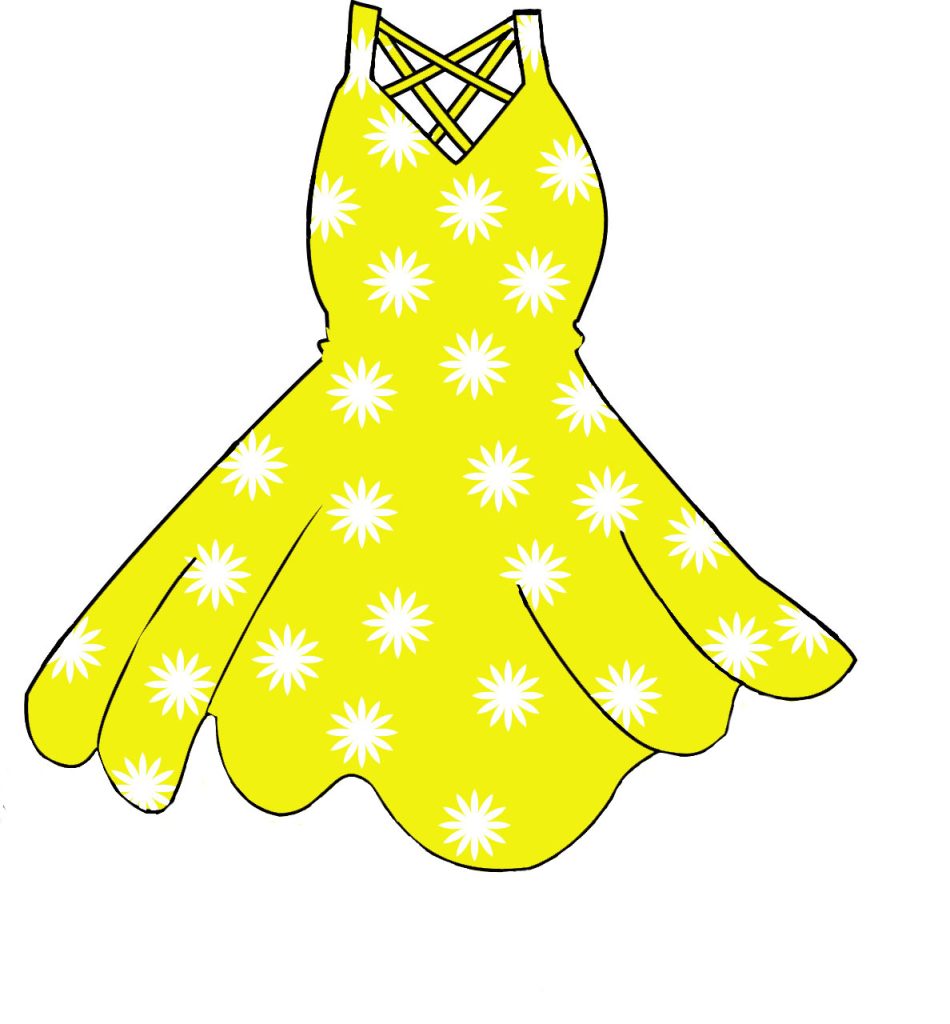 Ich trage ein gelbes geblümtes Kleid. |
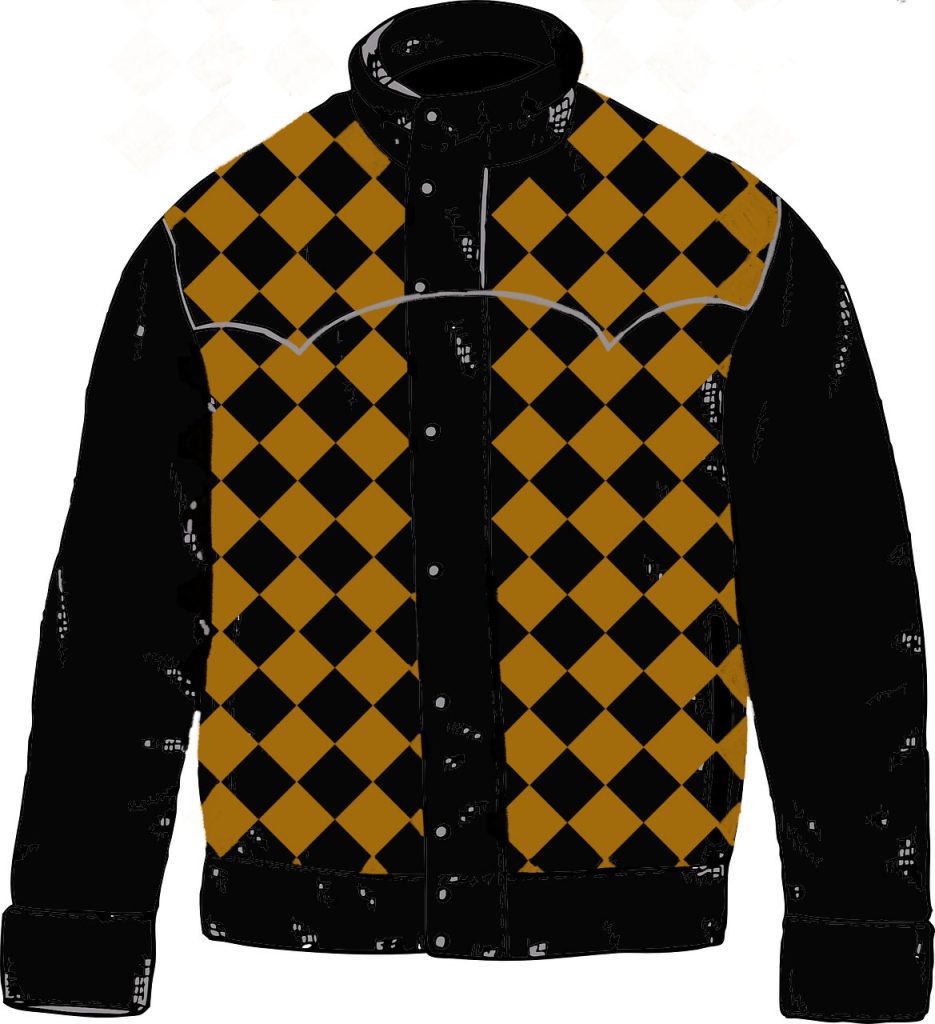 Ich trage eine schwarz-braune karierte Lederjacke. |
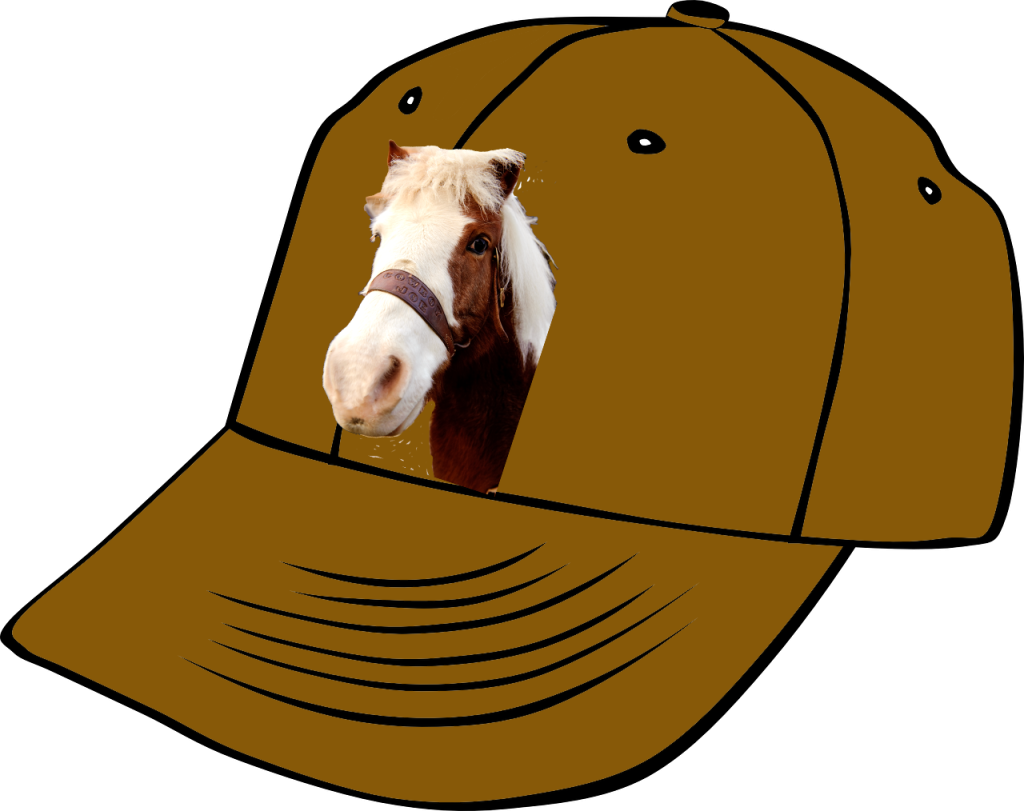 Ich trage eine braune Baseballkappe mit Cowboy Joe. |
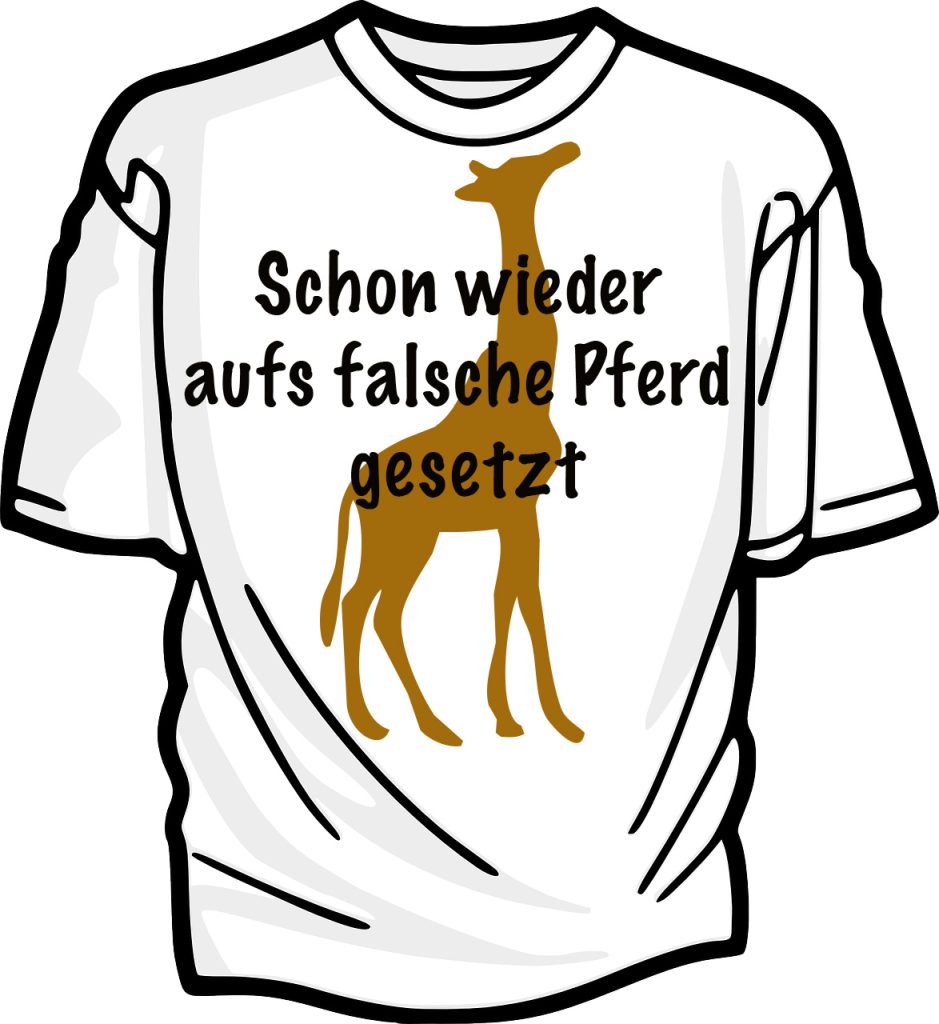 Ich trage ein weißes T-Shirt mit lustigem Aufdruck. |
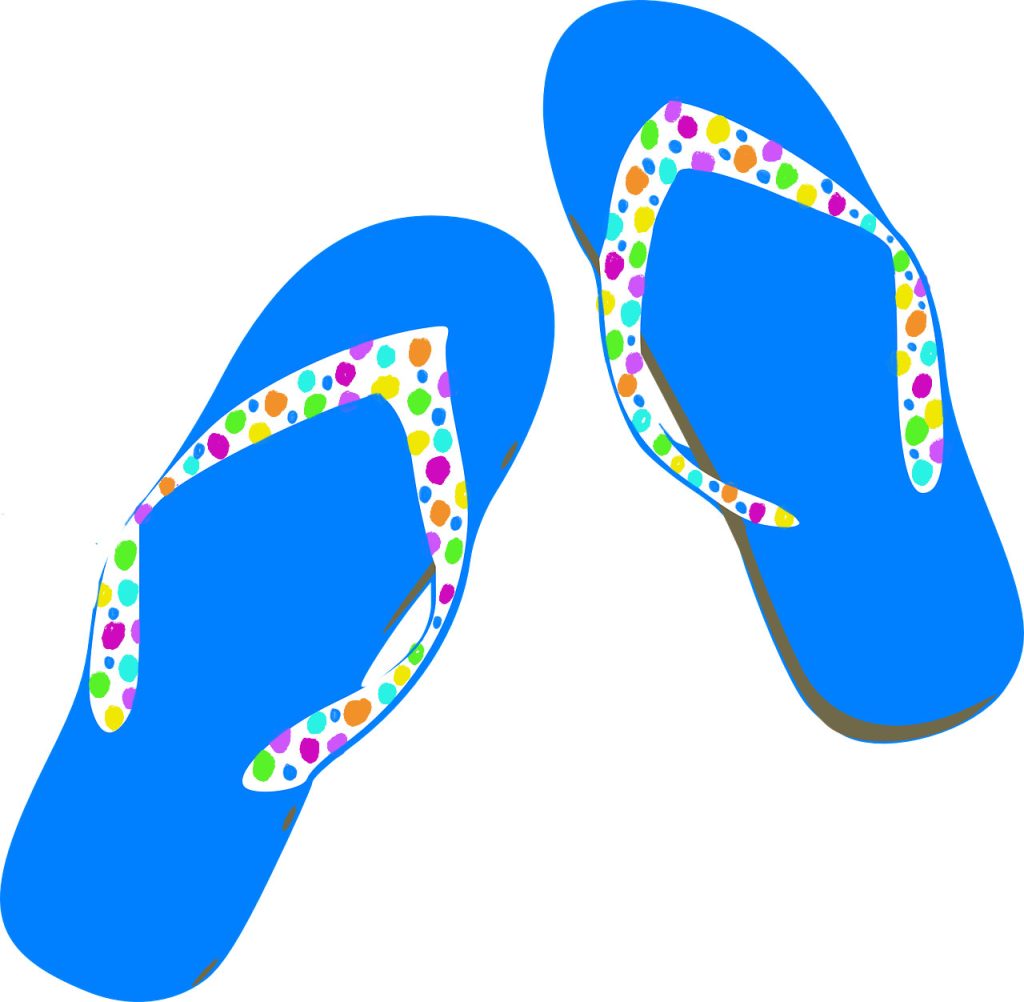 Ich trage bunt gepunktete Badeschuhe. |
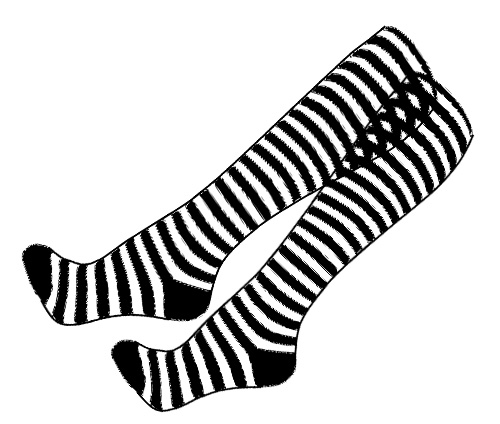 Ich trage schwarz-weiße Ringelsocken. |
Let’s practice.
Jetzt bist du dran!
Was trägst du heute? What are you wearing today? Are you wearing an item of clothing that has a distinctive color or feature. How would you describe it? Or do you have any clothing with a distinctive color/pattern? Using the sentences above as a template, write about this clothing in your written journal.
Then record yourself describing your clothing aloud! You might need to practice saying it a couple times before recording. Or rerecord, if you are not satisfied.
2) Other clothing descriptors
Fashion calls for a variety of vocabulary. You have already learned groß, klein, lang, und kurz. Let’s add to the list of clothing descriptors by looking at clothing grouped by theme.
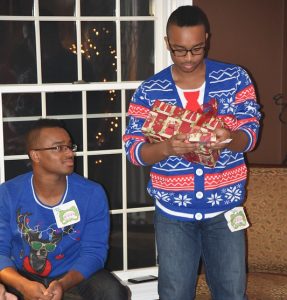 |
If you want to say an item of clothing looks nice, you can use…
hübsch, schön, elegant….or the opposite: hässlich Die Weinachtspullis sind hässlich. |
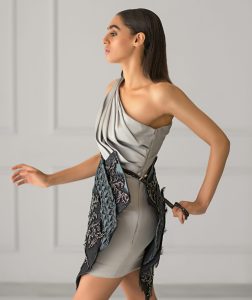 |
If you want to comment on the trendiness of the clothing piece, you can use…
modern, modisch, schick…or altmodisch Das graue Kleid ist sehr schick und modern und nicht altmodisch. |
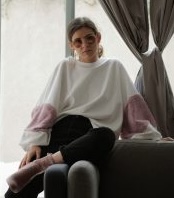 |
If you want to comment on the fit, you can say an item of clothing is…
eng, locker, breit, dick, dünn Die Frau trägt einen lockeren Pullover. Der Pulli ist gar nicht eng. |
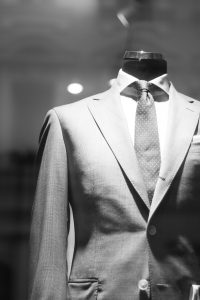 |
If you want to comment on the the price, you can say an item of clothing is
preiswert, günstig or the opposite: teuer Der graue Anzug und die weiße gepunktete Krawatte sind teuer. |
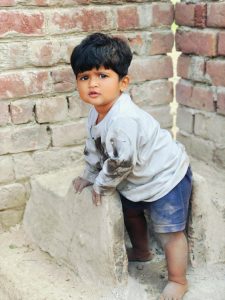 |
Or simply, clothing can be…
alt ≠ neu, sauber ≠ schmutzig Das Kind trägt einen schmutzigen grauen Pullover. |
Jetzt bist du dran!
Was trägst du heute? Wie ist deine Kleidung? How would you describe the clothes you are wearing today? Neu oder alt? Schön oder hässlich? In your written journal, record the condition of your clothing, using the modeled language above.
Then record yourself! You might need to practice saying it a couple times before recording. Or rerecord, if you are not satisfied
Köln im Blickpunkt
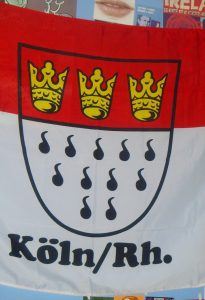
Die Stadtfarben von Köln sind rot und weiß. Sie stammen vom Wappen des Erzbischofs von Köln. Noch heute sieht man diese Farben auf der Stadtflagge und beim Fußballclub 1. FC Köln.
Cologne’s city colors are red and white. They originate from the coat of arms of the Archbishop of Cologne. These colors can still be seen today on the city flag and on the 1. FC Köln football club.
3) Immer – oft – manchmal – selten – nie
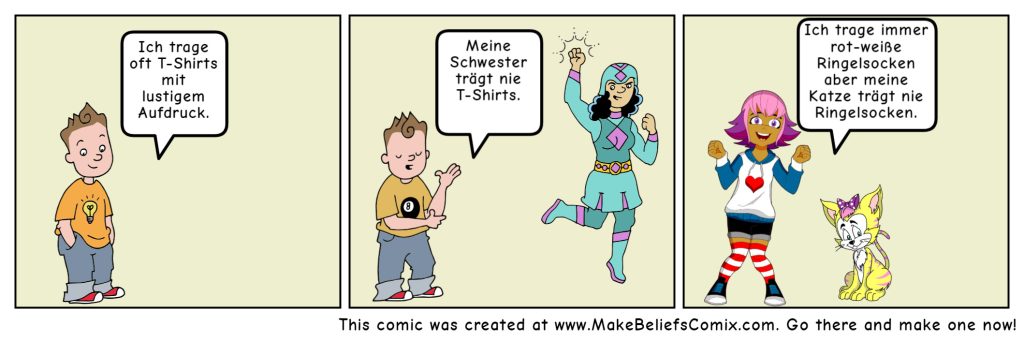
Jetzt bist du dran!
Wie oft trägst du T-Shirts? Wie oft trägst du Baseballkappen? Welche Kleidungsstücke trägst du nie? Consider these questions and write a sentence for each of the words marking frequency (also called adverbs) = immer, oft, manchmal, selten, nie.
Challenge yourself by building longer sentences using und or aber.
Zum Schluß

*As you conclude this lesson, don’t forget to check Canvas!*

Media Attributions
- 3.11 comics file-669fc90ce1c6c
- 3.11 pullover rotgestreift clothes-1294931_1280
- 3.11 skirt hearts -6276823_1280 (1)
- 3.11 dress yellow flowered wedding-dress-297509_1280
- 3.11 jacket karierte -310192_1280 (1)
- 3.11 hat cowboy joe -306380_1280 (1)
- 3.11 t-shirt lustig -34481_1280
- 3.11 badeschuhe gepunktet thongs-305284_1280
- 3.11 striped socks
- Photo of ugly Christmas sweater by Will Richardson via Flickr, Attribution-NonCommercial 2.0 Generic
- Photo of woman in gray dress by Khaled Ghareeb via Unsplash
- 3.11 baggy sweater joseph-perez-23b-G5BKrSU-unsplash-300×201
- Photo of suit by Vladimir Gladkov via Pexels
- Photo of boy by Pearl Aveline via Pexels
- Photo of Köln flag by Stephen Spillane, licensed as CC BY-SA 2.0“Koeln Flag” by Stephen Spillane, CC BY-SA 2.0
- 3.11_3 comic file-66eb3dc3cc488 © This comic strip was generated at http://www.MakeBeliefsComix.com. Used by permission of author and site creator Bill Zimmerman.

